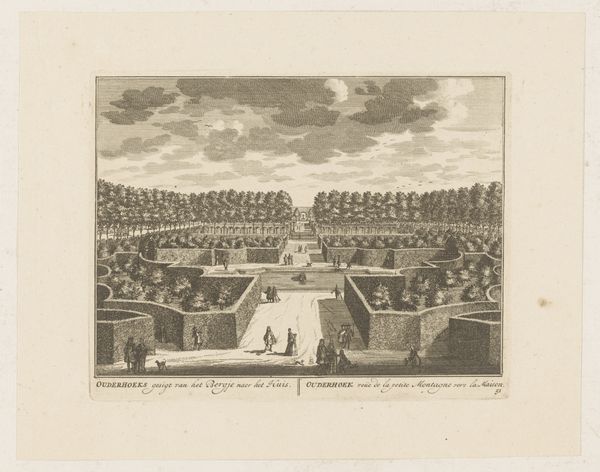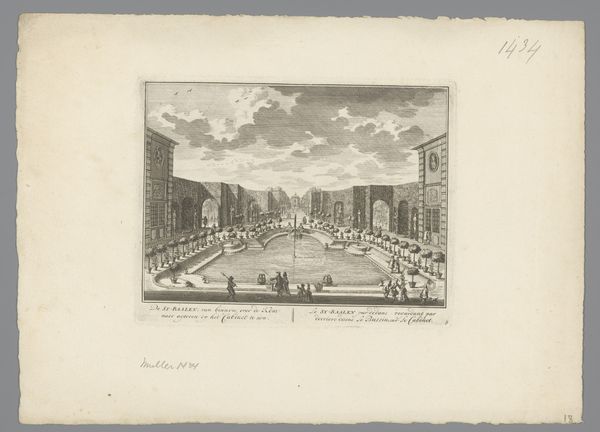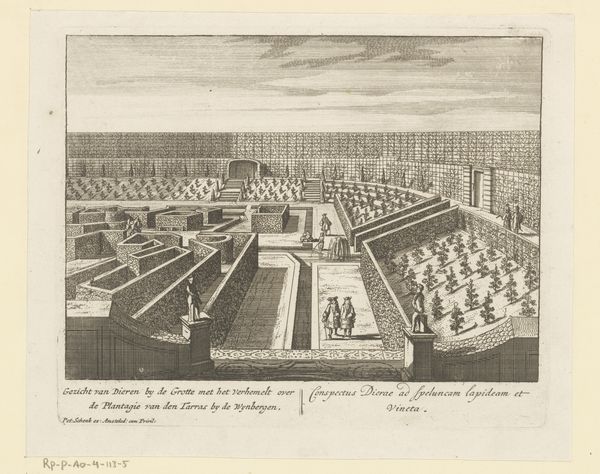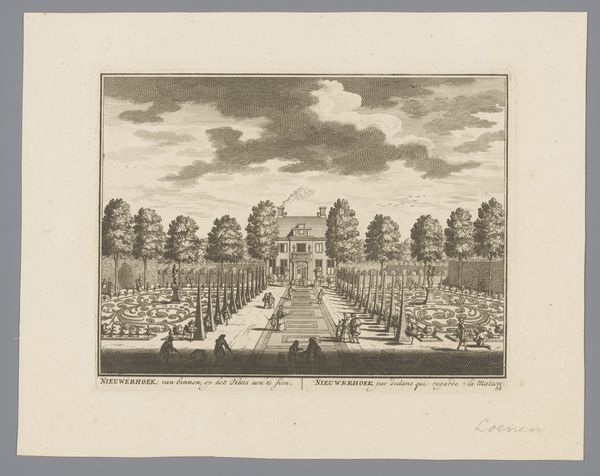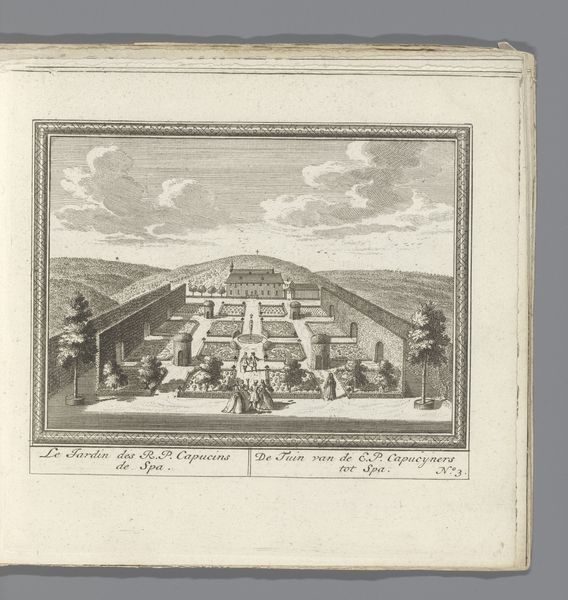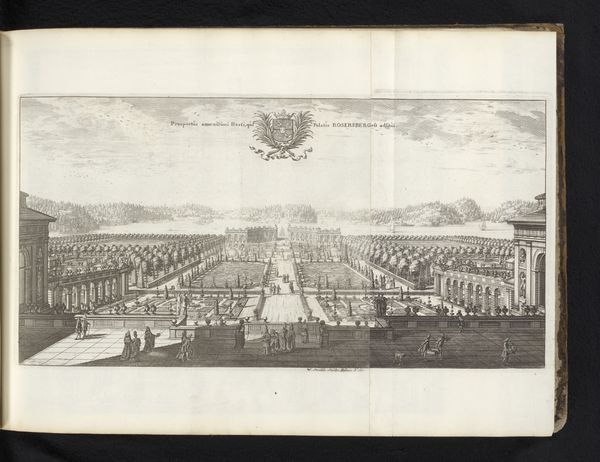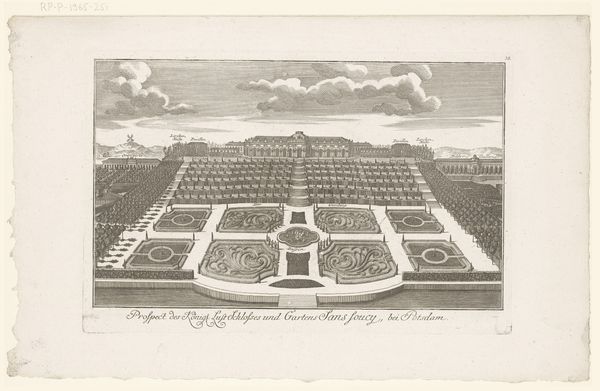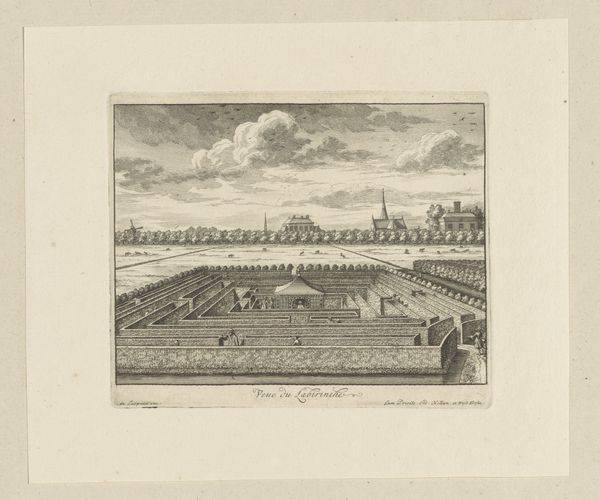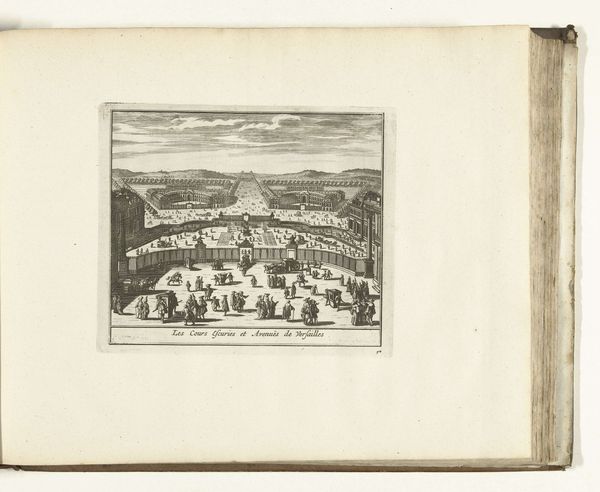
print, engraving
#
baroque
# print
#
landscape
#
cityscape
#
engraving
Dimensions: height 160 mm, width 207 mm
Copyright: Rijks Museum: Open Domain
Editor: This print, “Gezicht op de tuin van buitenplaats Hoogevecht” by Daniël Stopendaal, made in 1719, shows a manicured garden landscape. It feels incredibly formal, almost theatrical in its presentation. How would you interpret this work? Curator: It's like stepping back into a dream, isn’t it? This engraving captures that Baroque yearning for order, control... almost a stage-managed nature. The eye is led on this relentless march down perspective. I can almost feel the crunch of gravel underfoot, and then think about how those perfectly shaped trees required teams of gardeners. It makes you think: whose dream of nature is *this*, exactly? Editor: So, it's less about natural beauty and more about power? Curator: Precisely. Gardens were a signifier, a billboard of status, wealth, intellectual clout! It's about demonstrating your capacity to *impose* form onto the chaos of the natural world. Look how small the figures are, almost lost in the landscape. It really shows who’s in charge here, doesn't it? Do you find that contrast between the human figure and grandiosity of nature compelling? Editor: Absolutely, I hadn't considered that power dynamic so explicitly. I guess it changes how I view seemingly innocent landscapes from this period. Curator: That’s it! A work of art, even a landscape, is never simply about pretty things; it's always whispering something about the culture it sprang from. Hopefully this garden view gave you fresh grounds to see.
Comments
No comments
Be the first to comment and join the conversation on the ultimate creative platform.
